What’s it like to study sustainability?
Everyone talks about sustainability. But what’s it like to actually study the subject at university? And indeed, what does a university that teaches sustainable development look and feel like? Our reporter Laura Hennemann went to have a look at an unusual institution near Berlin.
Towering beech and spruce trees and plenty of clean, fresh air – that’s the first impression I get of the campus of the HNEE (Hochschule für Nachhaltige Entwicklung Eberswalde) or the University of Applied Sciences for Sustainable Development. It seems like the perfect setting for a university where students come to learn how to shape a more sustainable future.
The HNEE is located in the small town of Eberswalde, approximately 50 kilometres north-east of Berlin. It’s home to some 2,000 students who can choose from 16 different bachelor and master degree courses, among them forest information technology, marketing in organic agriculture and sustainable tourism management.
I’m curious about what kind of people a university of its kind draws. Do the students feel elitist given that they are studying to learn how to tackle some of the most pressing ecological problems of our time, studying to save the planet?
I meet Sina, Hanna and Fee, three young women studying international forest ecosystem management. They tell me that the students are a mixed bunch, ranging from iPhone owners, tree huggers to some rather extreme environmentalists. And it’s not just the students. The professors too have different mind-sets, they say.
The one thing the three agree on is that studying at the HNEE can change your outlook. There are frequent discussions on the environment and a course on sustainability is compulsory for everyone in the first semester. Also, it’s the little details which affect the students, they tell me.
I had noticed them myself when wandering around the campus. The building’s energy performance certificate is pinned prominently on a noticeboard at the entrance. There are waste bins in each room, consisting of three bright-coloured parts for easy waste separation. And of course, the printers and photocopiers use recycled paper. Another, probably unrelated, detail caught my eye – Both the ladies’ and the men’s toilet has a diaper-changing area. I secretly enjoy such progressive thinking.
But it’s much more than such small details. The students tell me that the campus is powered by energy from a green electricity provider. Some buildings even have their own photovoltaic systems. And all the food at the canteen is organic. The environment certainly does make every student a little more ecologically inclined, the students tell me, regardless of your attitude when when you started
I go on to the second campus of the HNEE in the town center where I meet Vera Luthardt. She is a professor at the faculty of landscape management and nature conservation and proud of the new name the HNEE gave itself: “To be very honest, I was almost surprised that implementing the term “sustainability” got a majority in 2010,” she says. And even more importantly, Luthardt adds, was the subtitle when the new name was announced: “Our name reflects our mission.”
Luthardt’s own research focuses on bog landscapes. Among other things, she and her colleagues are currently investigating how the re-wetting of ecologically damaged bogs might bind CO2.
And it’s not just young students that the HNEE is targetting. In addition to the bachelor’s and master’s degree courses, the university also offers an extra distance learning degree for working professionals in the corporate sector. It’s called strategic sustainability management.
“We cannot wait another entire generation for a rethink to take place,” Luthardt says. She has been teaching at the HNEE since 1993 and is proud to be working at a university which sets itself apart from the rest.
A hot ride in Manila
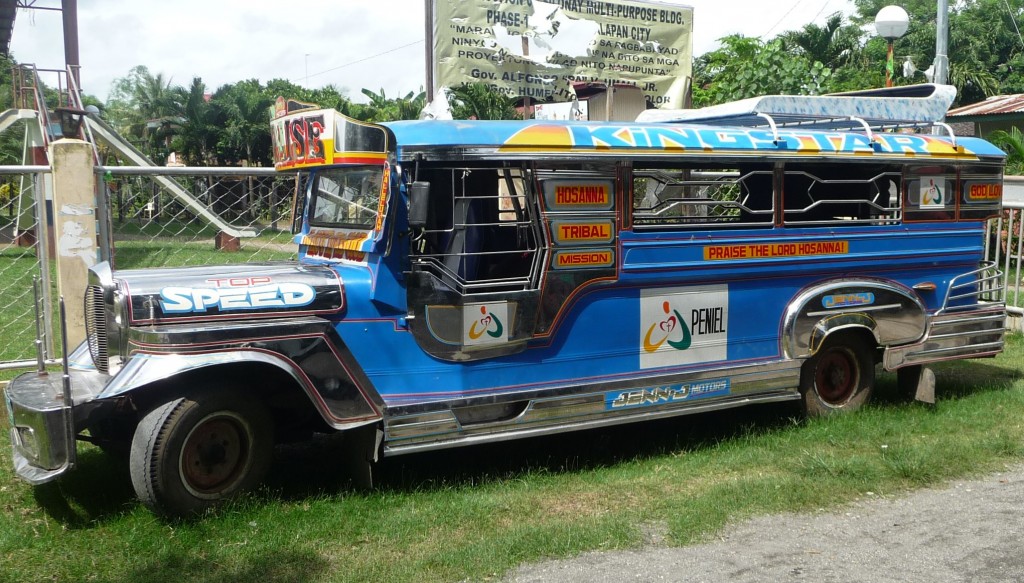 If someone has to use public transport in Manila, people most likely go by Jeepney. It‘s a typical Philippine transportation. Sometimes it’s extremely crowded, people squeeze in there like sardines in a can if they have to travel from one to another location. Most of all, the Jeepney is a damn hot ride, especially from an outer perspective. Each one of them is painted in a different way, very often with Christian blessings or something that is kind of a job description of the car‘s owner, „banana dealer“ for example. Some of the custom bodies are decorated with sculpturs, so it‘s possible to meet four big horses sitting on a something that‘s acctually a public transport vehicle. Fantasy has no borders, right?
If someone has to use public transport in Manila, people most likely go by Jeepney. It‘s a typical Philippine transportation. Sometimes it’s extremely crowded, people squeeze in there like sardines in a can if they have to travel from one to another location. Most of all, the Jeepney is a damn hot ride, especially from an outer perspective. Each one of them is painted in a different way, very often with Christian blessings or something that is kind of a job description of the car‘s owner, „banana dealer“ for example. Some of the custom bodies are decorated with sculpturs, so it‘s possible to meet four big horses sitting on a something that‘s acctually a public transport vehicle. Fantasy has no borders, right?
And the number of Jeepneys in Manila is epic. Watching them drive by in the city sometimes feels like visiting a huge street art gallery.
 Historically Jeepneys were American army jeeps left over from Wolrd War II. The word comes from a combination of the words “jeep” and “jitney” – which is something like a cab or bus carrying passengers on a regular route with flexible schedule. Today they are produced on a regular basis.
Historically Jeepneys were American army jeeps left over from Wolrd War II. The word comes from a combination of the words “jeep” and “jitney” – which is something like a cab or bus carrying passengers on a regular route with flexible schedule. Today they are produced on a regular basis.
But: As nice as Jeepney‘s may look the bad they are for the environment, guzzling an amazing lot of gas. So the gouvernment thinks about to at least lower the number of Jeepneys cruising the streets. That good for the environment of course, but it‘s sad for the eye.
On a highway to hell in Tajikistan
 Our reporter Mareike Aden took the famous Pamir Highway in Tajikistan to a remote region near the Afghan border to shoot a film about a reforestation project. The ride turned out to be long and extremely bumpy, for more reasons than one. Read her blog post to get the story.
Our reporter Mareike Aden took the famous Pamir Highway in Tajikistan to a remote region near the Afghan border to shoot a film about a reforestation project. The ride turned out to be long and extremely bumpy, for more reasons than one. Read her blog post to get the story.
We‘ve been waiting for almost two hours in the heat in front of the damaged bridge and no one knows how long it will take. Behind us and on the other side of the river, the line of SUVs (sports utility vehicles) is growing longer. Several workers are welding slabs and nailing together wooden plankts. Then suddenly our driver jumps back into the car. “Let‘s go,” he says and drives past everyone who‘s waiting in front of us. The bridge sways and rattles but holds. “The others were scared and wanted to see if it collapses,” he says and laughs.
We continue on our way after the unplanned break. We‘re on the Pamir highway that winds its way through the mountains of Tajikistan in Central Asia at an altitude of a few thousand meters. The locals call the highway simply”The Street.” It runs from the Tajik capital Dushanbe and covers a stretch of around 1,200 kilometers through the mountains till the city of Osh in Kyrgyzstan. A large part of the highway, which involves hours of driving, stretches along the Afghan border.
Our destination lies around mid-way on the highway. Khorog is the provincial capital of the mountainous Tajik region of Gorno-Badakhshan on the border to Afghanistan. There, we want to shoot a report about a German-Tajik reforestation project.
 “Around 15 hours,” is what our driver said when we left from Dushanbe in the morning. Now, it‘s late afternoon and it doesn‘t look like we‘ll be arriving anytime before midnight.
“Around 15 hours,” is what our driver said when we left from Dushanbe in the morning. Now, it‘s late afternoon and it doesn‘t look like we‘ll be arriving anytime before midnight.
By now, I wish I‘d never got to know “the Street.” The battered asphalt stretch is long over. Now we‘re bouncing over an unpaved dirt track along a slope. Our SUV rattles and shakes as we go up and down the narrow bumpy track that snakes around the mountains. When there‘s oncoming traffic, there‘s only one thing that helps – closing your eyes. But you get used to it. Just as you get used to bumping your head against the roof and gripping the door handle to brace yourself for the jolts.
At least the scenery on the other shore of the Pjandsh river distracts me – that‘s where Afghanistan lies and it‘s so close that we can see people in front of their small mud huts, children playing or colorful carpets laid to dry on the shore by the women.
To get into Khorog, home to 20,000 people, that lies on the Afghan border is not easy. Either you can take “the Street” or the allegedly most dangerous flight route in the world – thorough the Pamir mountains. It‘s said that during the Soviet era, pilots got paid an extra “risk bonus” for flying there.
Until today, small propeller-driven planes operated by Tajik Air fly to the region, but only on days when there are no clouds in the sky. We opted for a car because we really wanted to arrive there – whatever that means.
But I swear to myself that I will take a plane back after we arrive in Khorog at night after a 16-hour drive. Even our local driver who was in such a good mood to start with turned ever more silent towards the end. And the next day, my camerman Yurij admitted to me that he had secretly made emergency plans in case we‘d had an accident.
Three days later, we awere finished with our film shoot and in possession of two hotly coveted tickets for the small plane back to Dushanbe. But then – clouds appeared on the horizon. We had no choice but to get back into the car and back on the Pamir Highway.
But this time, all the bridges were intact, the rivers that our SUV had to drive through were not flooded – and after just 12 hours, we arrived in Dushanbe. “The Street” no longer seemed terrifying to us, well almost.
Germany’s not-so-smooth energy transition

Participants at Deutsche Welle’s Global Media Forum 2013. Are they surprised that the ship hosting the opening party runs on polluting diesel rather than clean solar power?
It’s a revolutionary project – Germany plans to meet 80 percent of its electricity needs with wind, sun and other renewable energy sources by 2050. In June 2013, Global Ideas hosted a high-level panel to debate Germany’s “Energiewende” (energy transition) – the country’s biggest infrastructure project since 1945. The debate was part of Deutsche Welle’s “Global Media Forum” in Bonn.
We asked our high-profile panel guests – Is Germany’s green revolution a role model for other countries or could it turn into a nightmare for German citizens with costs exploding? Global Ideas’ Kerstin Schnatz has more.
Energy transition challenges

Claudia Kemfert, head of the Department of Energy, Transportation, Environment at the German Institute of Economic Research (DIW), Berlin
Professor Claudia Kemfert from The German Institute for Economic Research (DIW) stressed, that despite 42 percent of all investments in renewable energies coming from citizens rather than big companies, the energy revolution is still under real threat. The German government provided the wrong incentives for a real green revolution favoring fossil fuels, such as coal, she said. “ We had thought that CO2 prices would solve the problem – but the fact is they don’t,“ Kemfert said, saying that explained why coal power still dominates Germany’s energy mix.
Kemfert, who was recently appointed shadow environment minister in the state of Hesse, warned that Germany had to be weaned off its reliance on coal. “Investments into coal power plants are still too cheap. But when new coal power plants are built today, we will be tied to them for the next 40-60 years until they are paid off,“ Kemfert said.
She admitted that fossil fuels are still needed for the transition phase, but she hopes to see more gas rather than coal as it is less polluting. Though solar power already provides 60 percent of Germany’s electricity needs on a sunny day, gas is still needed for cloudy and windless days, Kemfert said.
‘Dash for gas’
But British environmental journalist Fiona Harvey from the Guardian newspaper did not agree with Kemfert. “Gas is not a low carbon fuel,” the London-based expert on climate change issues said. Harvey warned that Britain’s “dash for gas” may turn into a big problem in the future when gas prices, which tumbled temporarily due to new extraction methods such as shell gas, rise.
According to Harvey, Britain needs an energy transition that increases the percentage of renewable energies from a current 5 percent of the overall energy mix. In Germany, renewables account for over 25 percent. “Only one fuel to rely on is not a good idea,“ Harvey warned, making the case for a green revolution where neither sun nor wind cost anything at all. She said she hoped Germany becomes a role model proving to other countries that a green revolution is possible.
New coal power plants
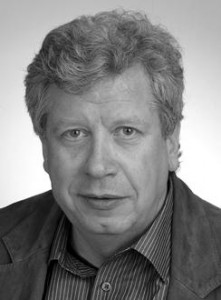
Franzjosef Schafhausen, head of Section Transformation of the Energy System, Federal Ministry for the Environment, Nature Conservation and Nuclear Safety (BMU)
Moderator Michaela Küfner’s question about whether Germany was intentionally headed for coal was anwered with an emphatic ‘no’ by Franzjosef Schafhausen, who represented the German federal ministry for the environment, nature conservation and nuclear safety.
Schafhausen admitted that new coal power plants are being built in some places – such as the 1.100 Megawatt MW plant Datteln IV in North Rhine-Westphalia. But at the same time, he stressed that Germany’s energy transition policy meant that “no company is prepared to make new investments in coal at the moment.”
Schafhausen who chairs the ministry’s department for the energy transition would like to see the carbon trading system reactivated, hoping to put a higher price on CO2 and thus making coal even less attractive for big companies.
On location in Rwanda: towering trees and crazy discussions
Modern skyscrapers and people talking to towering trees, irrepressible children who insisted on being in every frame and a heated discussion during a drive – reporter Julia Henrichmann came away with some lasting impressions while filming in Rwanda.
It doesn’t matter where you are in the Rwandan capital Kigali, chances are you’ll always find a moto-taxi (a motorcycle taxi), at your side waiting to drive you through the lush green valleys dotting the city. On the one hand, Kigali is a modern city with skyscrapers, busy streets and crowded shops. On the other, it’s also not unusual to come across pockets where some of the most amazingly large trees and plants find space to grow.
To get a sense of how big the trees are, I asked our driver Ismael to stand next to one I liked very much. He suddenly touched the tree and began talking to it. I asked him why. “Oh,” he said. “This must be a very old one, much older than me so I have to treat it with respect.”
I cannot say whether people are as respectful of nature everywhere in the country. There are many areas in Rwanda where people cut almost every tree for firewood. Gathering firewood is normally done by children. Some don’t go to school because of the long distances they have to walk to get firewood. It’s a problem that’s worsening by some estimates. Firewood is used in homes for cooking because there’s often no electricity. Many use diesel generators.
When we came to the countryside to the district of Nasho, many children wanted to touch me. Most of them had never seen a white person because they had never traveled beyond their district. They were delightful and innocent in a way that I have never seen children elsewhere. Maybe that’s because they did not expect anything from me. All they wanted was that I listen to them and spend some time with them (even though I did not understand their language).
And, of course they wanted me to take photos with them, even during the filming. They walked into every frame! How could we tell them that we just wanted Anastase Tabaro in the film, the man who brought electricity to their village? So we decided to make them part of the film. The villagers’ happiness and pride was palpable as they led us to the little hydro-electrical pump Anastase Tabaro had built for them.
Driving back to Kigali, we had a crazy animated discussion in the car and I became a bit alarmed that the Rwandans would come to blows. So they stopped talking in their native language and switched to English and French for my benefit. And so, what was the big discussion about? What’s the topic that pops up in conversations in Rwanda sooner or later? The genocide.
Even though it happened almost 20 years ago, everybody still talks very much talks about it. Every family here has been affected personally by the tragic event. When you come to Rwanda, you should no longer ask: “Are you a Hutu or a Tutsi?” That’s not the question anymore. The question we argued about in the car was the role of the media during the war and the genocide. Do you as a camera crew film or do you help the victims lying at your feet? During the three-hour drive, we came no closer to any answers. You will probably never find them.



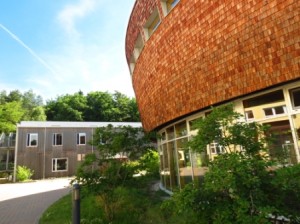
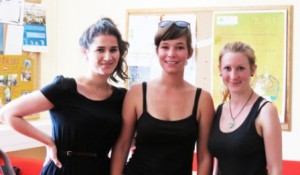



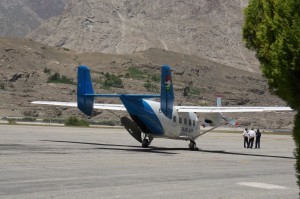







Feedback